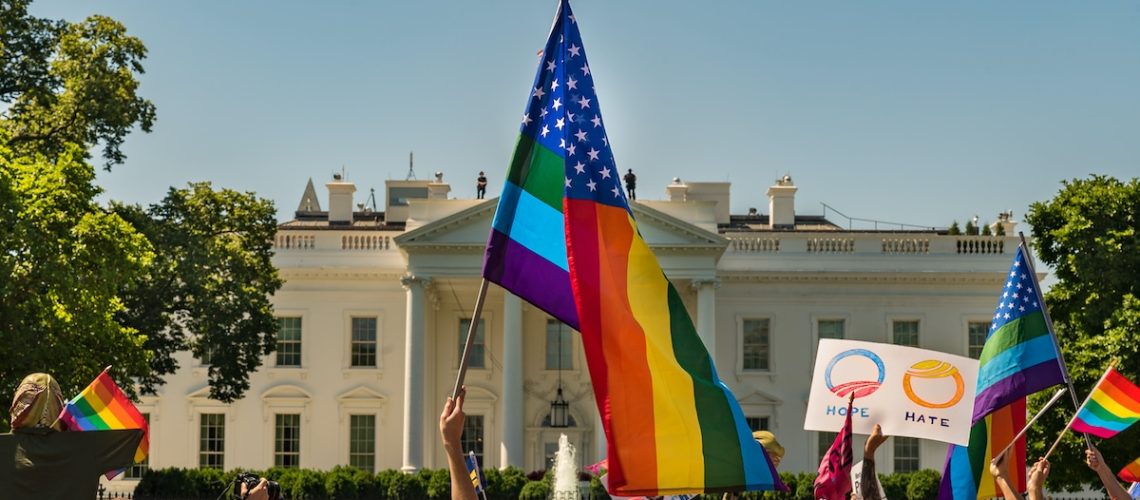A new report from the Williams Institute at UCLA School of Law highlights the disproportionate impact that strict voter ID laws can have on transgender individuals in the United States.
The report, titled The Impact of Voter ID Laws on Transgender Voters, examines the barriers faced by transgender people when attempting to cast their ballots, particularly in states that have implemented stringent voter identification requirements. It presents a concerning picture of how voter suppression laws disproportionately affect an already marginalized community.
Transgender Voters and Identification Mismatch
One of the report’s key findings is that approximately 878,300 transgender adults are eligible to vote in the U.S.. Still, many of them may face significant hurdles due to discrepancies between their identification documents and their gender presentation. A mismatch between a person’s ID photo, name, or gender marker and their current appearance or identity can lead to challenges when attempting to vote. This is particularly significant in states with strict voter ID laws, where voters are required to present government-issued identification at the polling place.
The report estimates that over 203,700 transgender individuals live in states that have strict voter ID laws. This means that a significant portion of the transgender population is at risk of being disenfranchised simply because their identification documents do not reflect their lived gender. Many transgender people face barriers to updating their IDs, including high costs, complex administrative processes, and discriminatory policies. As a result, they may be unable to vote even though they are legally eligible to do so.
Barriers to Updating ID Documents
The process of updating ID documents to accurately reflect one’s gender can be complicated and costly, and it varies significantly from state to state. According to the report, many states have burdensome requirements for changing the gender marker on IDs, such as providing proof of gender-affirming surgery or other medical interventions, which not all transgender individuals undergo. Additionally, the financial cost of updating IDs—including fees for new identification cards, legal name changes, and necessary medical documentation—can be prohibitive for many people, particularly those from low-income backgrounds.
These challenges are further compounded by systemic discrimination in employment, healthcare, and housing, which disproportionately affects transgender individuals. This means that many transgender people may lack the financial resources or access to supportive services that could help them navigate the ID updating process.
The report also notes that these barriers are particularly burdensome for transgender people of color and those living in poverty. Transgender people of color are more likely to face economic hardships and discrimination, making it even more difficult to obtain updated identification. As a result, they are at a heightened risk of being disenfranchised by strict voter ID laws.
Disenfranchisement in States with Strict Voter ID Laws
The report highlights the particularly severe impact of strict voter ID laws on transgender voters. In states with these laws, voters are required to present a government-issued ID, such as a driver’s license, passport, or state identification card, in order to cast a ballot. If an election official determines that the photo or information on the ID does not match the individual presenting it, the voter may be turned away or required to cast a provisional ballot, which may not be counted.
The Williams Institute found that transgender individuals in these states are disproportionately likely to experience problems when attempting to vote due to ID issues. Many transgender voters have not been able to update their IDs to reflect their current name, gender, or appearance, leading to mismatches that can raise suspicion or lead to the denial of voting rights. This is particularly problematic for transgender individuals who may already face discrimination or hostility in public settings.
The report estimates that of the 203,700 transgender individuals living in states with strict voter ID laws, about 64,800 do not have updated IDs that accurately reflect their gender. This puts a significant number of transgender voters at risk of disenfranchisement in future elections.
Potential Solutions
To address the barriers faced by transgender voters, the report offers several policy recommendations. These include reforming voter ID laws to provide more flexibility for individuals whose gender presentation does not match their identification documents. For example, states could allow voters to sign affidavits confirming their identity or allow the use of alternative forms of identification that do not require a photo.
Another recommendation is to make it easier and less expensive for transgender individuals to update their identification documents. This could involve eliminating fees for updating gender markers on IDs, simplifying the process for legal name changes, and removing requirements for proof of medical procedures or treatments to change gender markers. Some states have already taken steps in this direction, but there is a need for broader reforms across the country.
Additionally, the report suggests that election officials receive training on transgender issues, including how to respectfully and fairly address situations where a voter’s appearance does not match the gender marker or photo on their ID. This could help reduce the risk of discrimination and ensure that transgender voters are able to participate fully in the electoral process.
This article was first published on Pulse of Pride.
Feature photo credit: Shutterstock/BenjaminCarver. The images used are for illustrative purposes only and may not represent the actual people or places mentioned in the article.
For transparency, this content was partly developed with AI assistance and carefully curated by an experienced editor to be informative and ensure accuracy.

